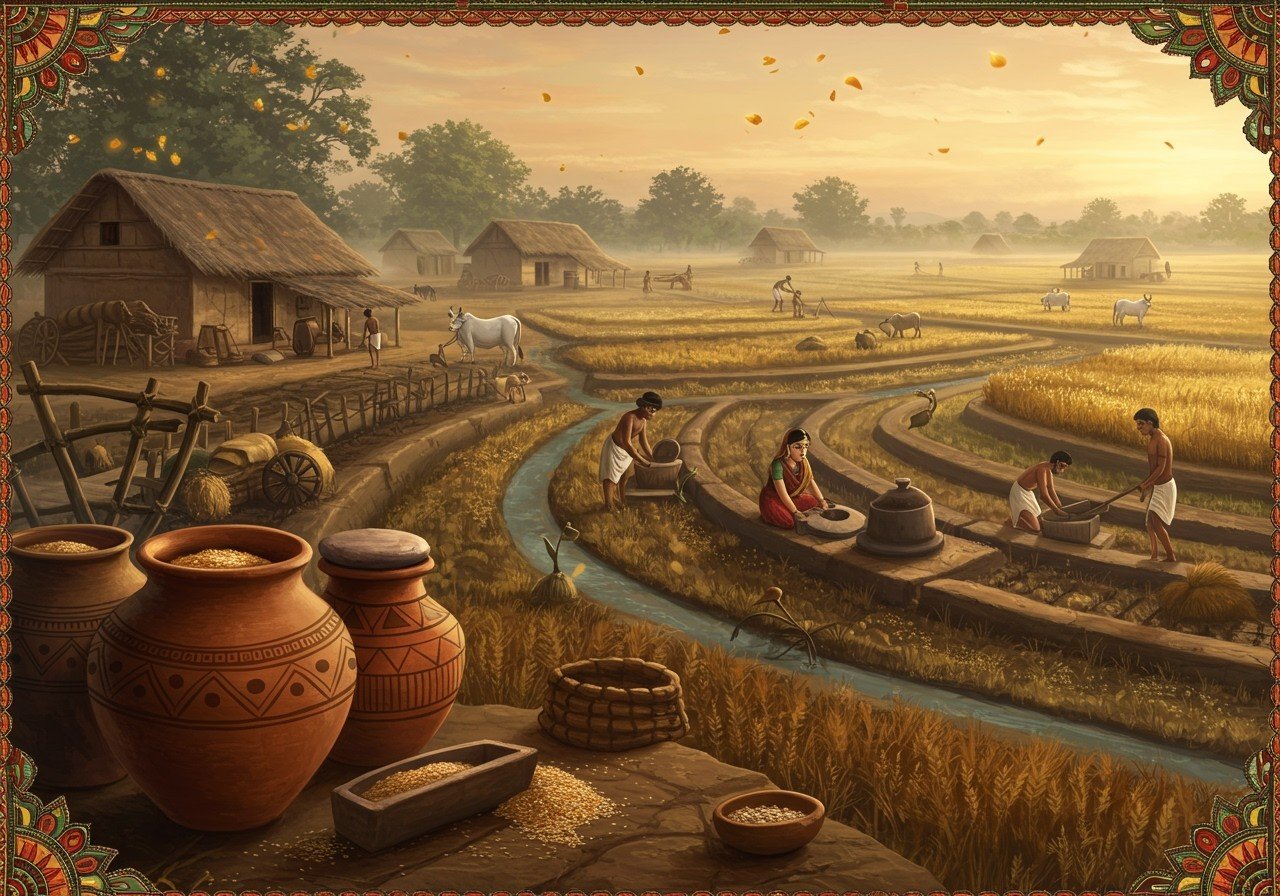
The Jorwe culture, a Chalcolithic civilization flourishing around 1400-700 BCE in Maharashtra’s Deccan region, offers valuable insights into early Indian agriculture. Their sophisticated farming techniques, alongside their unique pottery and burial practices, provide a glimpse into a society deeply intertwined with the land. Understanding their agricultural practices helps us appreciate the evolution of farming in India, from the Neolithic period (around 8000-6000 BCE) to modern times, and its impact on our cultural heritage.
Overview of the Jorwe Culture
Primarily situated along the Pravara River, the Jorwe people established settlements evidenced by archaeological sites like Inamgaon. Their skills extended beyond agriculture to pottery and craftsmanship, showcasing a vibrant and multifaceted culture. Their social structure, intrinsically linked to agriculture, reveals the central role farming played in their economy and daily life. This is reminiscent of early agricultural development in South Asia, which began around 9500 to 7500 BP, as evidenced by the ancient site of Mehrgarh.
Agricultural Practices of the Jorwe Culture
Jorwe farmers cultivated a variety of crops, including barley, wheat, and pulses. Their agricultural technology, as revealed by excavated tools and implements, demonstrates an understanding of effective irrigation methods. They employed crop rotation and followed seasonal farming patterns, maximizing their yields. Similar to how ancient farmers relied on monsoons and practiced terrace farming, the Jorwe people adapted their techniques to their environment. The importance of grain storage is evident in the presence of granaries within their settlements, ensuring food security throughout the year. Much like how Indian agricultural products were traded globally in ancient times, the Jorwe culture’s agricultural success likely contributed to their economic prosperity.
Shifting Cultivation and its Significance
Shifting cultivation, also known as slash-and-burn agriculture, was a prominent practice in Jorwe agriculture. This method involved clearing land by burning vegetation, temporarily enriching the soil with nutrients. However, this practice necessitated moving to new areas as the soil’s fertility declined. This cyclical movement significantly influenced Jorwe community movements and settlement patterns. While offering benefits like soil rejuvenation, it also presented challenges such as land degradation, a concern that continues to impact modern agricultural practices.
Comparison with Contemporary Agricultural Practices
Comparing Jorwe techniques with modern methods reveals significant advancements in agricultural technology. Today, we benefit from sophisticated irrigation systems, more effective crop rotation strategies, and advanced farming tools. Despite these advancements, the core principles of sustainable agriculture, like those practiced by the Jorwe people, remain relevant. Traditional practices such as organic farming echo the Jorwe people’s connection to the land, while modern techniques address the challenges of increasing food demands and environmental sustainability. Like the introduction of foreign crops to ancient India, modern agriculture continues to adapt and evolve.
Impact of Agriculture on Jorwe Society
Agriculture profoundly shaped the social and economic fabric of Jorwe society. It influenced community interactions, trade networks, and social hierarchies. Agricultural surplus enabled craft specialization and supported religious and ceremonial practices, enriching their cultural life. The productivity of their farms directly impacted their daily lives and contributed to their overall cultural development.
Poojn.in: Connecting You to India’s Agricultural Heritage
Poojn.in, India’s leading cultural goods and services store, offers a wide range of products to support your agricultural rituals and traditions. We understand the deep connection between agriculture and Indian culture, dating back to ancient civilizations like the Jorwe. Our offerings help you honor these traditions and connect with your heritage.
-
Copper Vessels and Kalash: Essential for traditional water rituals, our pure copper vessels and kalash are crafted according to traditional specifications, honoring the practices of ancient agricultural societies. Explore our collection of copper items.
-
Dhaan (Paddy): Used in various agricultural ceremonies, our dhaan is carefully selected to ensure purity and authenticity, connecting you to the core of agricultural rituals. Find high-quality dhaan at poojn.in.
-
Puja Samagri: From Annakut to harvest festivals, we offer complete puja samagri kits, containing all the essential items for your agricultural ceremonies, simplifying your preparations and ensuring authenticity. Browse our puja samagri kits for all occasions.
Conclusion: The Enduring Legacy of Jorwe Agriculture
The Jorwe culture’s agricultural practices provide a window into the ingenuity and resourcefulness of early Indian farmers. Their techniques, from irrigation to crop rotation, laid the foundation for sustainable agriculture. By studying their methods, we gain a deeper appreciation for the evolution of farming in India and its continued impact on our society and culture. Poojn.in is committed to supporting the preservation of these traditions, offering products that connect you to India’s rich agricultural heritage.
Explore more about ancient Indian architecture and cultural practices on our blog:
- Vastu Shastra: Principles and Practices of Ancient Indian Architecture
- Karnataka’s Ancient Temples: A Spiritual Journey


